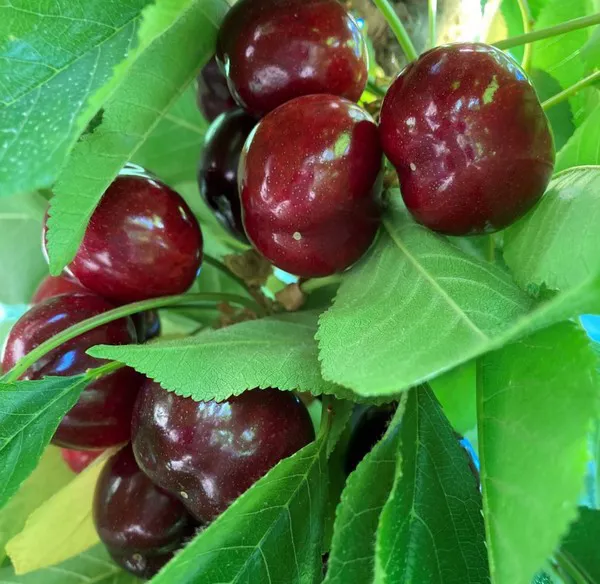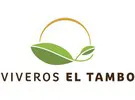Many people believe cherries are one of the fruits with the greatest potential for Peru's agro-export sector. However, although the prospects are certainly encouraging, the country's industry, which in just a few years has managed to position itself as one of the leaders in the export of blueberries, grapes, avocados or asparagus, among other fruits and vegetables, still has a long (although very hopeful) road ahead in which the nursery sector is playing a key role.
"At Viveros El Tambo we have alliances with various breeding companies. We are partners of ANA (Andes New Varieties Association). More than 20 years ago, 4 Chilean nurseries partnered creating ANA with the objective of seeking genetics anywhere in the world, mainly focusing on deciduous fruit trees, managing them and making them available to nurseries and growers in Chile and other countries."
"Through ANA we are working with several genetic programs. One of them is Unibo, of the University of Bologna, with which we are confident we can achieve success in Peru. In fact, at Viveros El Tambo we are working on bringing several temperate climate varieties from Unibo to Peru from Chile, but for now we have not been able to overcome the phytosanitary barriers that Peru is putting up. On the other hand, IFG, with whom we also work, has a cherry department under development, and they have been the first breeders to obtain low dormant cherry varieties."
"What has been done so far is to test with existing genetics and see if they can work in Peru, but the results have not been as expected," says Samuel. "That is why it is so important to introduce these varieties in the country. We still don't know when we will be able to achieve this, but we should be close already. We are even hopeful that, if we achieve the entry of the varieties this year, for which there is still time, we will be able to start in 2023 with the propagation and supply of cherry trees to Peruvian growers interested in testing the crop."
"Arequipa is the region that best suits the conditions required for cherry cultivation"
Obtaining varieties with low cold requirements will prove essential for the future cherry industry in Peru, where research is already underway in order to find the most favorable regions for potential expansion.
"Peru needs to seek an area which offers both a minimum amount of cold hours, but also a warm spring, so that the fruit can ripen and be harvested in October. For Peru to be successful in the cherry market, it has to harvest its fruit before Chile, because otherwise, it will be very difficult for it to compete with Chilean fruit," says the director of Viveros El Tambo. "Chile is the world's largest exporter of cherries, and it is going to start with earlier and earlier fruit in early November. In fact, today, practically the only thing being planted in the country is early varieties with earlier harvest dates than the Santina, including the Sweet Aryana, Nimba or Pacific Red."
"But, in addition to the required temperature, you need the area to be well connected; that is, to be easily accessible. Therefore, I would say that Arequipa is the region that best fits these three conditions. It has some cold hours, it has a warm spring and its flat geography means it has very good accessibility. Apart from this, progress is also being made in techniques that can help do without the cold."

"We will have good results in China again"
Viveros El Tambo has been devoted to fruit tree production in Chile for almost 3 decades, and has been present in Peru since 2014, contributing with its quality plant material to the growth of the thriving table grape and blueberry industries. "These two fruits currently account for 95% of our activity in Peru. With citrus and avocado we are still developing, and the same applies to cherry trees, but many people in the industry expect we are going to be involved with these for years to come."
And, despite the fact that the export results in recent years have not been as good as expected due to economic factors, Chile has shown the importance of cherries in the global market and, more specifically, in the most populated country on the planet: China.
"Since 5 to 7 years ago, when cherries had a vertiginous development in Chile, reaching very good prices, Peru has been looking to produce cherry trees. The last three seasons have been challenging, especially in the period after the Chinese New Year. COVID and the situation of the logistics sector have made things harder and, therefore, plantings have stopped, with the exception of the early varieties. There is a lot of concern about what is going to happen next season, with the New Year being a week earlier than in 2022. However, I think that in the future (although probably not next year), we should achieve good results in China again. On the one hand, because the date of the New Year is changing every year, and on the other hand, because as the situation in the rest of the world normalizes, cherries are going to continue to attract great interest, and new markets will be explored."
"Also, if Chile manages to produce fruit in November, the chances for success are very great; but if Peru manages to do so in October, its chances will be even greater," says Samuel Escalante.
 For more information:
For more information:
Viveros El Tambo
Parcela #83, El Tambo, comuna de San Vicente TT, VI Región, Chile
Tel.: +56 9 38620219
[email protected]
www.viveroseltambo.cl
